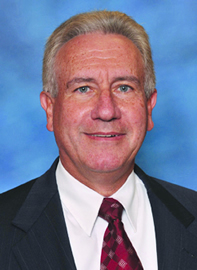Researchers continue to learn more about the mechanisms and pathologies of the inflammatory myopathies, leading to ongoing developments in diagnostic and treatment options.
A Tuesday afternoon symposium will feature a panel of experts who will discuss key updates in clinical, pathologic, and serologic features of the inflammatory myopathies.

Previously, autoimmune myopathies were previously divided into two subgroups, dermatomyositis (DM) and polymyositis (PM), said Andrew L. Mammen, MD, PhD, Associate Professor of Neurology and Medicine at Johns Hopkins University School of Medicine. Both DM and PM patients have lots of inflammatory cells.
“In recent years, however, it has become clear that there is a third subgroup of autoimmune myopathy patients — immune-mediated necrotizing myopathy (IMNM),” Dr. Mammen said. “IMNM patients have prominent muscle fiber necrosis with minimal inflammation. They also have unique autoantibodies that distinguish them from patients with PM or DM.”
There are two different well-characterized groups of IMNM patients — those with anti-SRP (signal recognition particle) antibodies and those with anti-HMGCR (3-hydroxy-3-methyl-glutaryl-CoA reductase) antibodies.
“Both groups have very high CK levels, while neither has prominent extra-muscular manifestations, unlike other forms of myositis often have,” Dr. Mammen said.
Studies have demonstrated a strong correlation between anti-HMGCR autoantibodies and statin exposure. Patients who are statin-exposed tend to be older and respond well to treatment. Those who are statin-unexposed and younger tend to respond poorly to treatment.
“Anti-SRP patients are difficult to treat and may respond best to rituximab,” he said. “Consider early IVIG treatment for those who are anti-HMGCR positive and do not respond quickly to prednisone plus another agent.”
Dr. Mammen said that in patients with a necrotizing myopathy who have neither anti-SRP nor anti–HMGCR, further work-up was needed to determine what disease they have — muscular dystrophy, toxic myopathy, antisynthetase syndrome, for example — and the appropriate management options.

Chester V. Oddis, MD, Professor of Medicine, Division of Rheumatology and Clinical Immunology, University of Pittsburgh, will discuss the clinical features of the antisynthetase syndrome, focusing on the presence of interstitial lung disease (ILD), and current treatment paradigms.
“The syndrome is defined by the presence of an antisynthetase autoantibody in association with myositis, fever, Raynaud’s phenomenon, mechanic’s hands, inflammatory arthritis, and ILD,” Dr. Oddis said. “There are also some atypical presentations that can fool rheumatologists. Not every patient will present to their doctor with all of the manifestations, which is exactly why it is so important to recognize, understand, and treat this disease. Patients may present in a lung-dominant fashion without all of the defining features, making recognition and early treatment difficult.”
He noted that some synthetase positive patients (particularly the non-Jo-1 synthetase positive subset) might actually present differently and more subtly compared to the classic anti-Jo-1 positive patient, which can potentially delay diagnosis and treatment and lead to worse outcomes.
“When treating patients with antisynthetase syndrome, it’s important to focus on the stubborn manifestation of ILD, as this is the feature that defines the outcome and prognosis of such patients,” he said. “Specific treatment considerations include glucocorticoids and other immunosuppressive agents, such as mycophenolate mofetil, cyclophosphamide, tacrolimus, and there are some encouraging emerging data on the use of B-cell depleting agents, i.e., rituximab.”
In his presentation, Dr. Oddis will also discuss amyopathic DM, as these patients can also present with severe ILD and possess antisynthetase autoantibodies, and the complication of pulmonary hypertension in the antisynthetase-positive population.
The symposium will also include a presentation by Neil J. McHugh, MBChB, MD, of the Royal National Hospital for Rheumatic Diseases in Bath, United Kingdom, who will discuss the specificity and prognostication of myositis specific antibodies.
